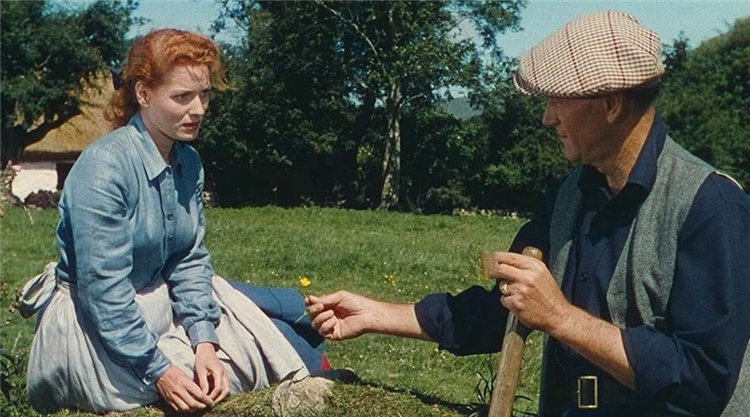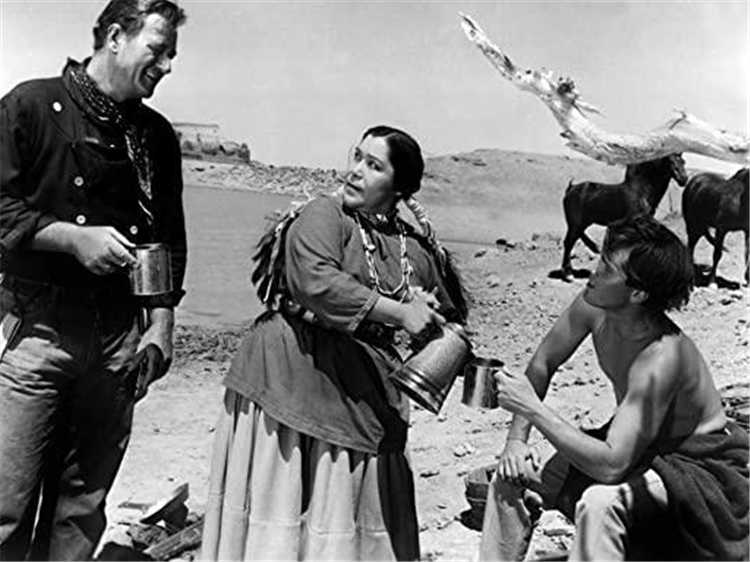Advertisement
The famous Hollywood movie actor John Wayne had a long history with Arizona that stretches back to the late ’50s when the Hollywood cowboy legend purchased 4,000 acres of farmland between Maricopa and Stanfield just southwest of Phoenix. He borrowed and paid $4 million dollars for the acreage because his tax attorney thought it would be a good investment.
John Wayne financed a cotton crop through the Anderson Clayton Company of Phoenix, one of the largest cotton brokers in the world. Then, due to a lack of time and farming experience, Wayne paid the AC Cotton company to farm the land for him. It soon became clear to Wayne that the Anderson Clayton Company didn’t know how to farm cotton either.
During Wayne’s many visits to his cotton farm he noticed the farm of his neighbor, Louis Johnson, was doing considerably better than his own. The Duke’s farm was struggling, so he called his brokerage people and asked who the best cotton farmer in the area was. They told him it was Louis Johnson. When everyone else was getting two and a half bales to the acre, Louis was getting four.

Convinced that Johnson was the farmer Wayne needed to make his floundering property a success, he called him. Explaining he couldn’t come to Arizona because he was in the middle of making a film, he offered to cover all expenses if Johnson would fly to Hollywood to talk with him.
Johnson agreed to meet Wayne, and the outcome of their discussion was that Johnson would manage Wayne’s cotton crop for one year for $14,000. If the farm produced three bales per acre, he would receive an additional $50,000, and, if he produced four bales per acre, he would get an additional $100,000. Johnson produced 4.22 bales to the acre that year, earning Wayne in excess of $1 million dollars!
But the success was not obstacle free. During the cotton harvest, agents from the bank showed up in the field to repossess 10 mechanical cotton harvesters. Louis marched over to the bank and signed a nearly $800,000 note so that they wouldn’t take the equipment.
John Wayne was so impressed by the success of his newfound manager, the two decided to merge Wayne’s 4,000-acre farm with Johnson’s 6,000-acre farm and become partners. The 10,000 acre-farm became one of the largest in Arizona.
The two partners had a running bet that if Louis was able to produce more than four bales per acre a year, the Duke would buy him a Cadillac. Every year but one Wayne bought Louie a new Cadillac car.

Johnson renovated a bedroom for Wayne to stay in Maricopa when he and his family made trips to the Johnson residence. Often Wayne would come to the house to have Louis wife Alice help him shave off some weight for an upcoming movie role.
Alice said, “I would follow a diet plan from a book called the Diet Watchers Guide,” “It was a sort of an old-time Weight Watchers program.” According to Alice, the real key to his weight loss was a specially designed bathroom in which every surface was mirrored except the ceilings and floors. “Wayne always said being able to see his body from every angle helped him to drop the weight.”
While the cotton business tre ated the two men well, federal government cutbacks on water allocations in Arizona in the 1960s, aimed at preventing Southwestern cotton farmers from putting others in the nation out of business, pushed Wayne and Johnson toward cattle ranching.
Advertisement
Johnson and Wayne built an 18,000-head feedlot at Stanfield, Arizona just a few miles from Maricopa and soon expanded into cattle breeding with an operation in Springerville, Arizona that covered more than 50,000 acres. Wayne named the Arlington cattle operation the “Red River Ranch Land Co.” after his favorite movie role as an actor.
At the Springerville location, known as the “26-Bar Ranch” just outside Eagar, Arizona in the White Mountains, Wayne and Johnson focused on raising the highest quality Herford bulls and then auctioning them off back at the ranch near Maricopa. These annual auctions attracted hundreds of potential buyers to the area from across the nation. Those auctions were a big event back in the day.
Advertisement
In addition to the Springerville ranch, the feedlot near Maricopa expanded to 85,000 head, becoming the largest privately owned feedlot in the United States.
However, in 1974 housewives across the nation, enraged by skyrocketing beef prices, staged a brief but powerful boycott, sending the Wayne-Johnson cattle operation into the red. We lost millions, Alice Johnson lamented. “It was amazing that Louis could just come to bed every night, close the door and not worry about a thing.”

To counteract the failing cattle prices, John Wayne and Louis Johnson reduced the number of cattle on their feedlot to 8,500, but the bankers were not going to let Wayne give up on the business. The bankers insisted he begin buying cattle despite being low on credit. They told Wayne to keep buying cattle until they told him to stop. Wayne and Johnson began buying in January 1975 and by June had expanded the operation tenfold from 8,500 to almost 85,000 head of cattle.
The partnership between the two men ended in 1979 when John Wayne finally passed away of cancer, but many residents of Maricopa and Springerville still have fond memories of him.
During his many trips to the Red River Ranch at the tiny community of Maricopa Wayne would often drive through the downtown, stopping at local businesses. No one rushed him for autographs when he stopped. He was one of the townspeople. He loved the kids and would stand for hours signing things for them.
Wayne would also often head out to his favorite drinking location, the Table Top Tavern in nearby Stanfield, Arizona and spend time with local farmers.
When Wayne died in 1979, Louis Johnson decided it would be best for him to exit the cattle business also. The Wayne children were going to sell Duke’s portion, so he decided it would be a good time to get out of the business rather than getting stuck with a partner we didn’t know.
When the Wayne children were auctioning off items from the Dukes estate, they surprised Louis and Alice Johnson by calling them out to their father’s California residence. Alice had first visited there many years before, falling in love with an extravagant chandelier Wayne had purchased in Europe. “It was so weird seeing such a beautiful chandelier in his home, it just didn’t fit his personality,” Alice said.

When they arrived for the estate sale, the children said they were going to vote on gifting the imported chandelier to Alice, and all seven voted in favor. “I was so happy I did a dance on the kitchen floor,” Alice said.
Louis Johnson, Wayne’s cotton and cattle partner, died of cancer in 2001, and Alice, in her 80s, remarried a few years later.
Between the years 1976 to his death in 1979 John Wayne became a partner with his close ftiend, Charles “Chuck” Kenworthy in an attempt to locate the Lost Dutchman Gold Mine treasure in the Superstition Mountains of Arizona. Kenworthy believed the mine and treasure were buried underground on a mesa top just north of Charleboise (Charley-Boy) spring at the top of Charleboise Canyon.
Wayne became an investor in Kenworthy’s Heart Quest expedition and he deeply wanted to accompany Kenworthy into the Superstition Mountain’s to help with the work. But Wayne was at the time under doctor’s care and he was forced to get updates and progress reports from Kenworthy while the Duke rested and oversaw operations at his Maricopa ranch. John Wayne was still keenly interested in the Superstition Mountains quest at the time of his death on June 11,1979.
John Wayne once said, for all his acting and movie rolls, some of his fondest memories were the years he spent farming and ranching in Arizona. Red River was the Duke’s personal favorite film and his cattle ranch in Arizona allowed him to become in real life the cattleman he portrayed on the silver screen.
Advertisement
Advertisement
